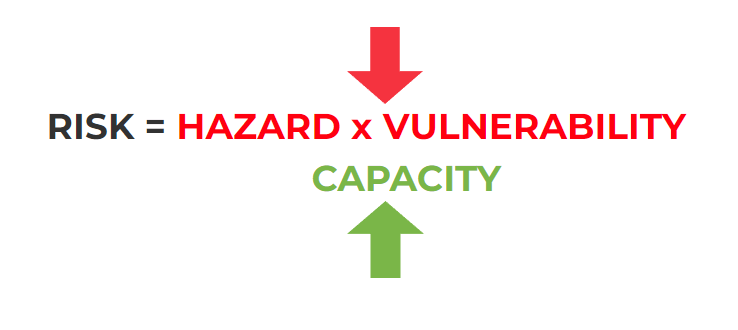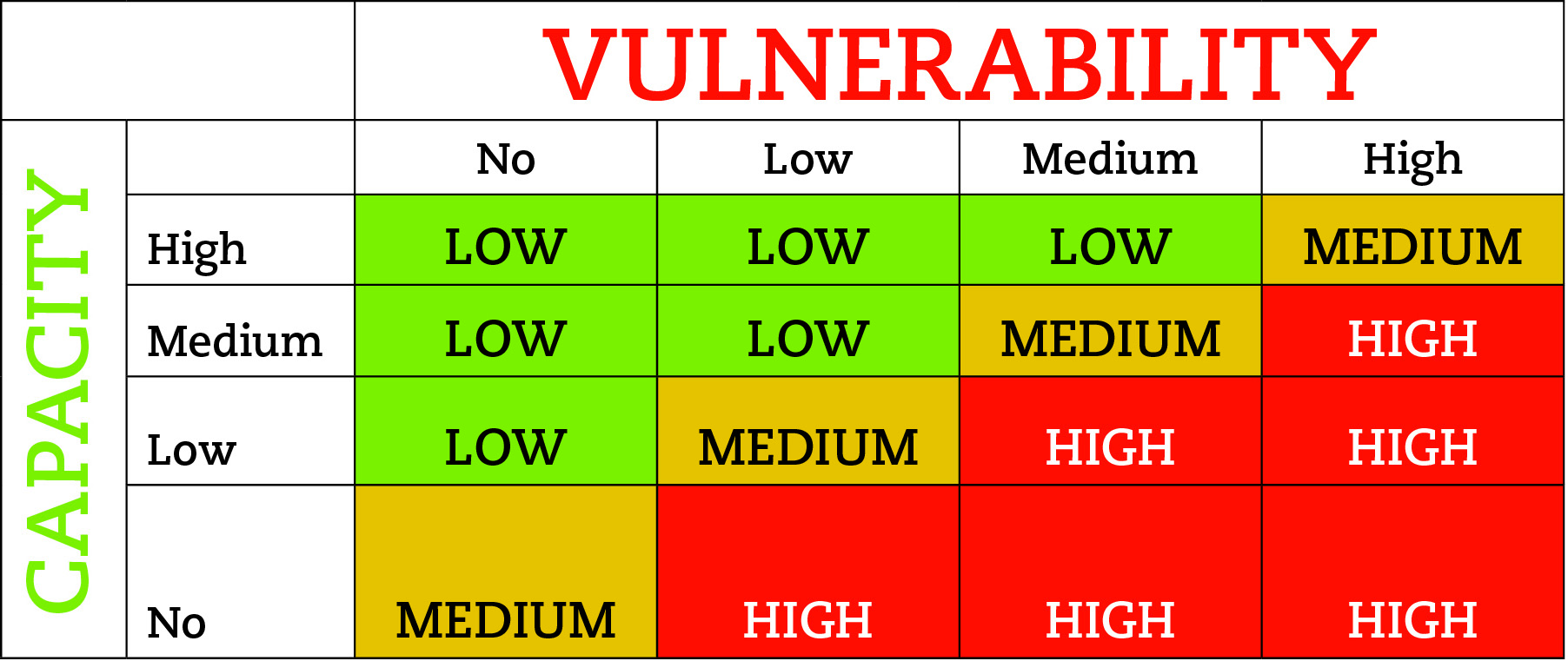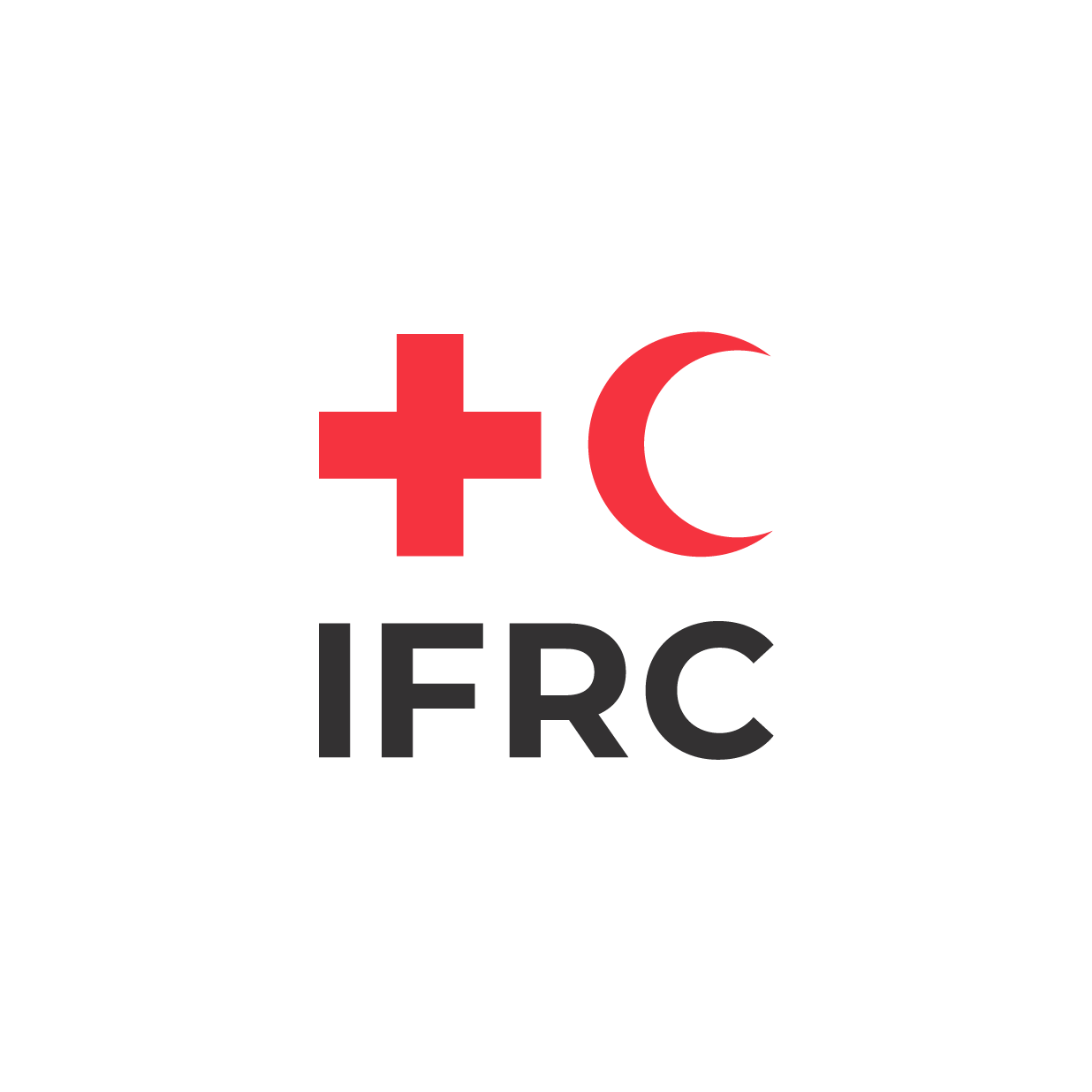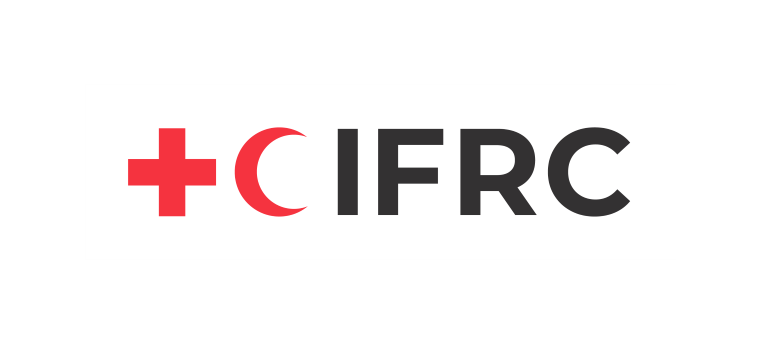Stage 2
Reference Sheet CC
EVCA summative analysis using rating
Rate vulnerability
Tools: Talk to the wall (ask the community to put on a wall or table the results of the exercises, such as the Resilience Star, mapping and the table of vulnerability and capacity assessments). By putting the results side by side for each hazard, you can compare, triangulate and consolidate the findings.
Purpose: Using all the information from the tools, apply a ranking for all vulnerabilities.
Rating: When rating, visualize the hazard affecting the community, and remember to consider the most vulnerable groups and the different exposed zones:
NO
NO EFFECT
In rare cases, a certain hazard will not have any detrimental effects when analysed against certain resilience dimensions.
LOW
MINIMAL SHOCK TO INDIVIDUALS AND SERVICES
- People and services will not be significantly affected.
- People can meet their basic needs and cope with the effects of the hazard.
- The community will remain connected, and access to services will not be disrupted.
MEDIUM
SOME SHOCKS TO INDIVIDUALS AND SERVICES
- People and services will experience some negative effects.
- People may struggle to meet basic needs.
- Community groups become uncoordinated, and services will begin reaching capacity.
HIGH
SEVERE SHOCK TO INDIVIDUALS AND SERVICES
- People and services will suffer very noticeable effects.
- They will struggle to meet basic needs, and likely require significant interventions.
- Community services will become overwhelmed and require significant support.
Start with the first hazard. Go through each of the resilience dimensions and apply a rating of NO, LOW, MEDIUM or HIGH for every vulnerability.
Many ratings will be based on community perception but should be rooted in the information gathered from the various tools. Facilitators should refer to all tools and secondary sources where needed. Repeat this rating process for all resilience dimensions.
After completing vulnerability ratings for the first hazard, move on to the second and third hazard.
Tip: Add energy
When rating with the community, try to develop a more fun and engaging way to rate. You could develop a traffic light system. People vote and if the majority think it is RED, then the rating is HIGH.
Record all the ratings in your EVCA report.
Rate capacity
Now rate capacity – refer to the information in the Resilience Stars and other tools used.
Rating: When rating, visualize the hazard affecting the community, and remember to consider the most vulnerable groups and the different exposed zones:
NO
CAN COPE
Individuals and community groups will be able to cope with the effects of the hazard with existing resources. They will share information and resources, and remain cohesive to cope with the hazard within the community.
LOW
CAPACITY TO COPE STRETCHED
Individuals, community groups and essential services will become stretched and may need external support, guidance and resources to respond to the hazard.
MEDIUM
STRUGGLE TO COPE
Individuals, community groups and essential services will become overwhelmed or fail. Support from government or other external organizations will be required to cope with the hazard.
HIGH
NO EFFECT
In rare cases, a certain hazard will not have any detrimental effects when analyzed against certain resilience dimensions.
Repeat the rating process for all remaining resilience dimensions. Then rate capacities for the other hazards. Record all the ratings in your EVCA report.
Determine level of risk
Remind the community that risk is directly proportional to the hazard and level of vulnerability, and is inversely proportional to the capacity to withstand the shocks and stressors of the hazard.

Remind the community that the:
- Risk level is the HIGH when vulnerability is high and capacity is low.
- Risk level is LOW when the vulnerability is low and capacity is high.
Using this matrix, bring together all the previous vulnerability and capacity rankings to determine risk.

Rate risks against the remaining eight resilience dimensions for the priority hazards (if you rated the risks for social cohesion, inclusion and connectedness earlier, you can now merge the evidence).
HAZARD 1: FLOODING
If you rate each hazard separately, consolidate and rate the risks for the second and third priority hazards as well. You can also use the summary table below or enter the rating in the EVCA Excel report template and it will calculate the risk score for you automatically.
Be sure to share the final assessment report and validate the risk score with the wider community and key stakeholders. This will be the basis to identify and discuss the risk‑informed community action plan in the next stage.
HAZARD 2: VECTOR‑BORNE DISEASE (MALARIA AND DENGUE)

The International Federation of Red Cross and Red Crescent Societies is the world's largest humanitarian network and is guided by seven Fundamental Principles: Humanity, Impartiality, Neutrality, Independence, Voluntary Service, Universality and Unity.
Follow IFRC
© The Global Disaster Preparedness Center 2024
